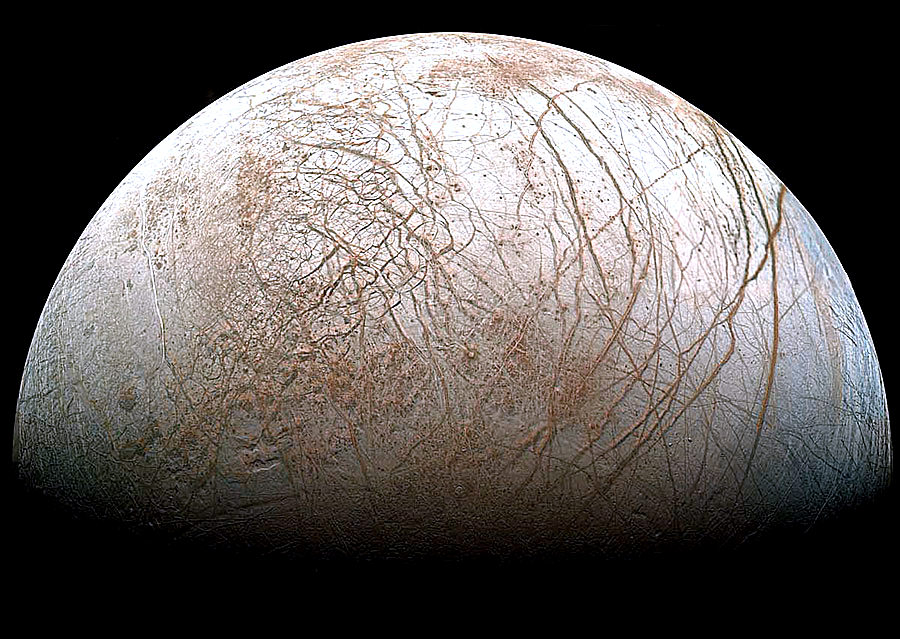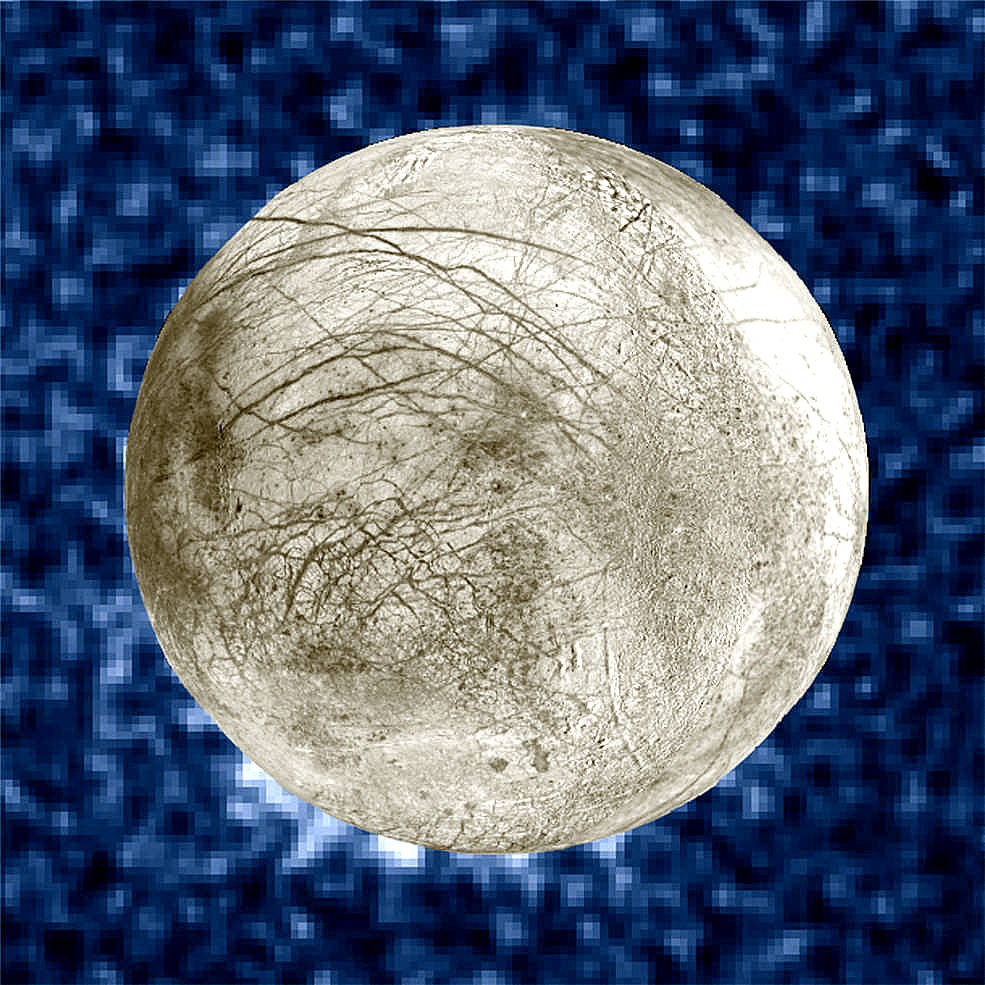Destination Europa
Europa Clipper artist concept (credit: JPL/CalTech)
Finding life beyond the Earth, exobiology, has been a quest for as long as people have pondered the stars and planets. One of the most intriguing places in our solar system is the icy moon of Jupiter, Europa. Tantalizing photographs captured by the Galileo spacecraft suggest an entire global ocean under its cracked shell of ice. A robotic mission to this putative 'water world' is nearing completion and will carry a tool-kit of hi-tech sensors, probes, and cameras to produce detailed maps of the moon's surface and scan its interior.
The Jet Propulsion Lab at CalTech is designing and building the spacecraft that will launch in October 2024. The Europa Clipper, and go into orbit around Jupiter, not Europa, after a 6-year voyage. The probe will use the Jupiter's gravity to swing past the moon 45 times getting as close as 16 miles above its frozen surface. The Clipper will survey the entire moon during its mission.


Europa fractured surface and geyser plumes (credits: Galileo Mission & Hubble space telescope)
A diversity of instruments will investigate the moon. Radar will penetrate the ice to determine its thickness; a spectrograph will determine the chemistry of surface materials exuded from below; while others will measure salts in any ocean; and another to measure the existence of any magnetic field around Europa. The Hubble space telescope has provided hints that a geyser field is spewing from the moon's south pole that could be potentially sampled. Two videos detail the plans and excitement for this new space adventure. We're going to Europa and finally be able to answer an existential question if there is life beyone Earth. WHB